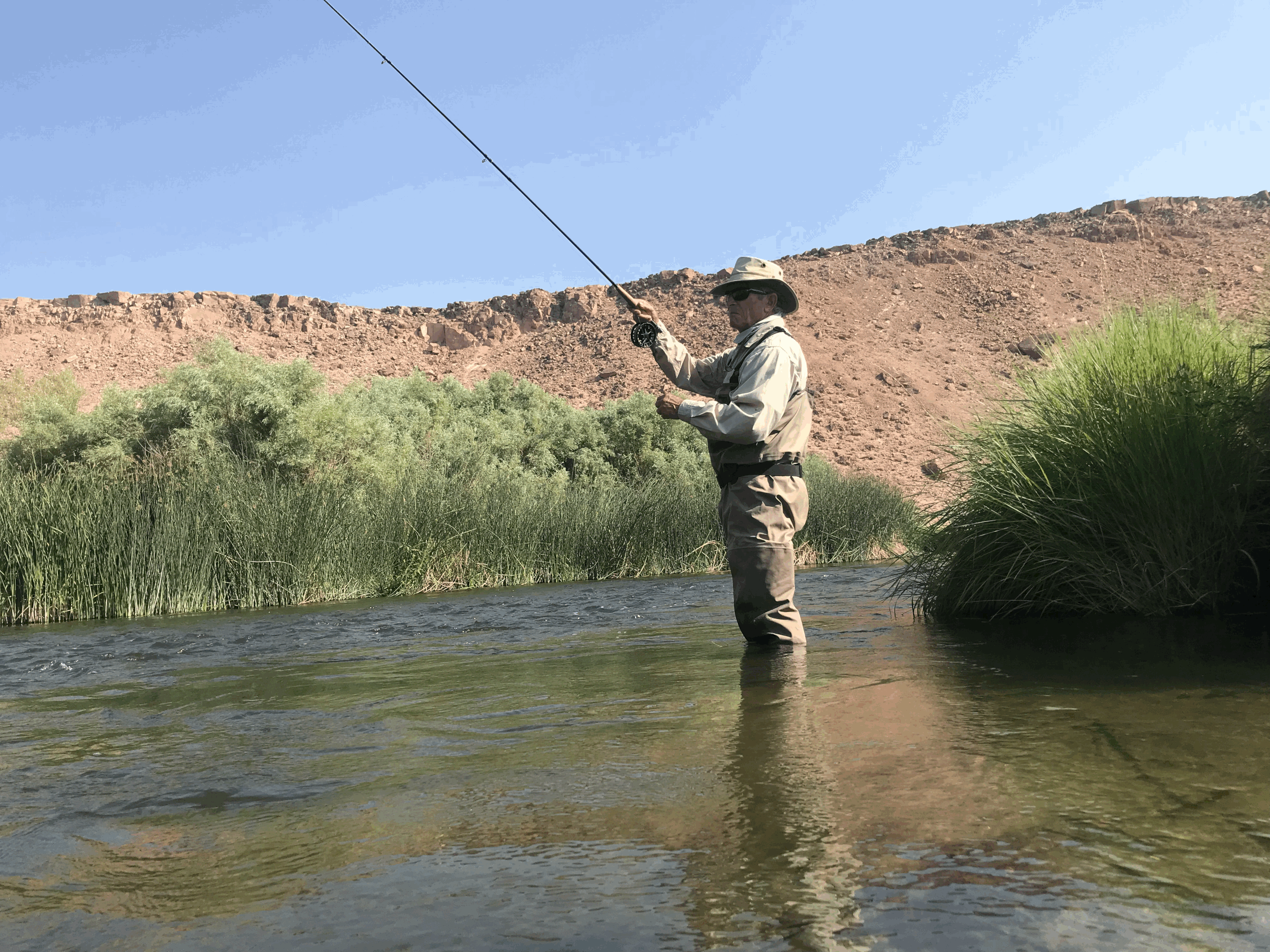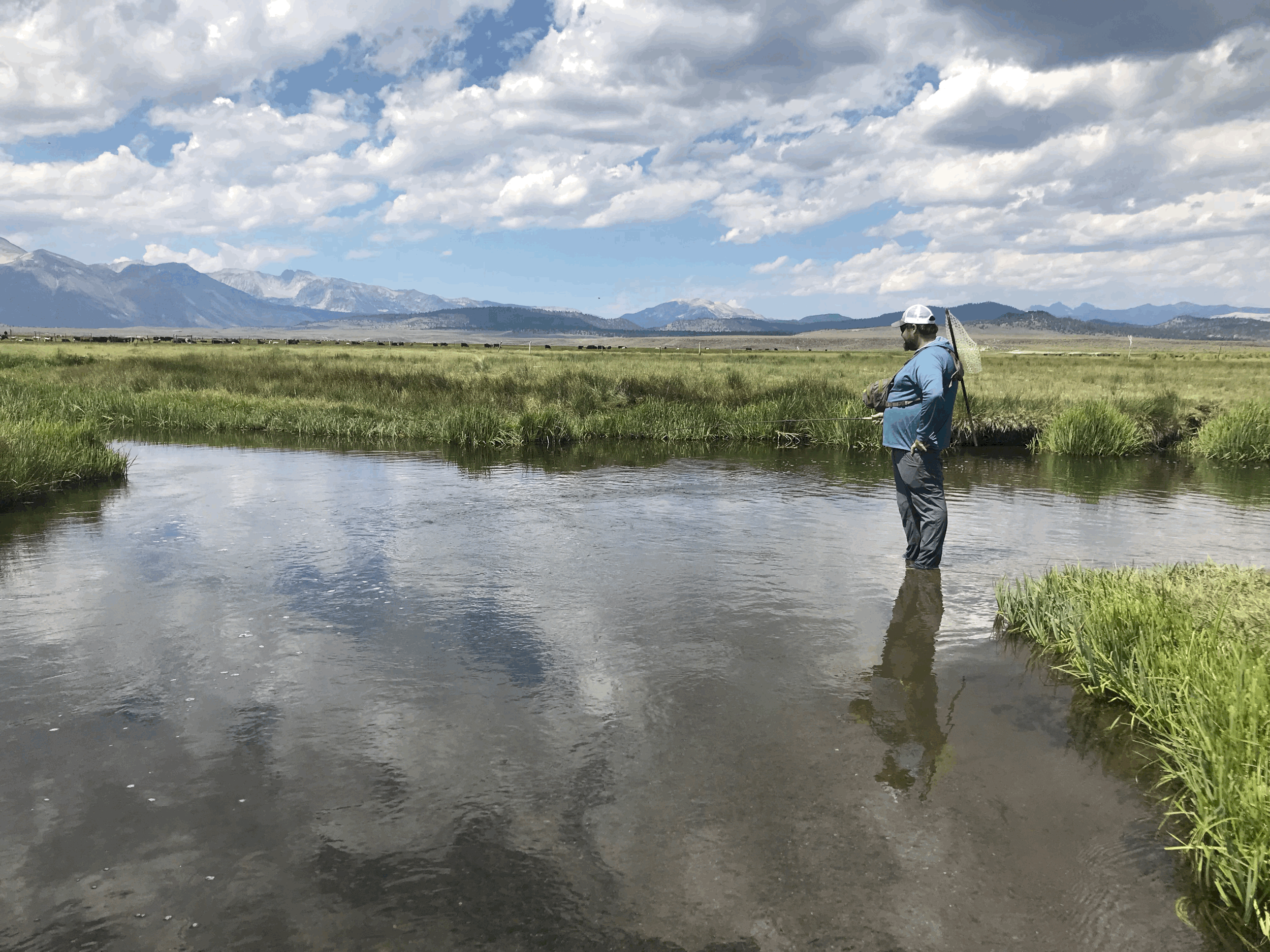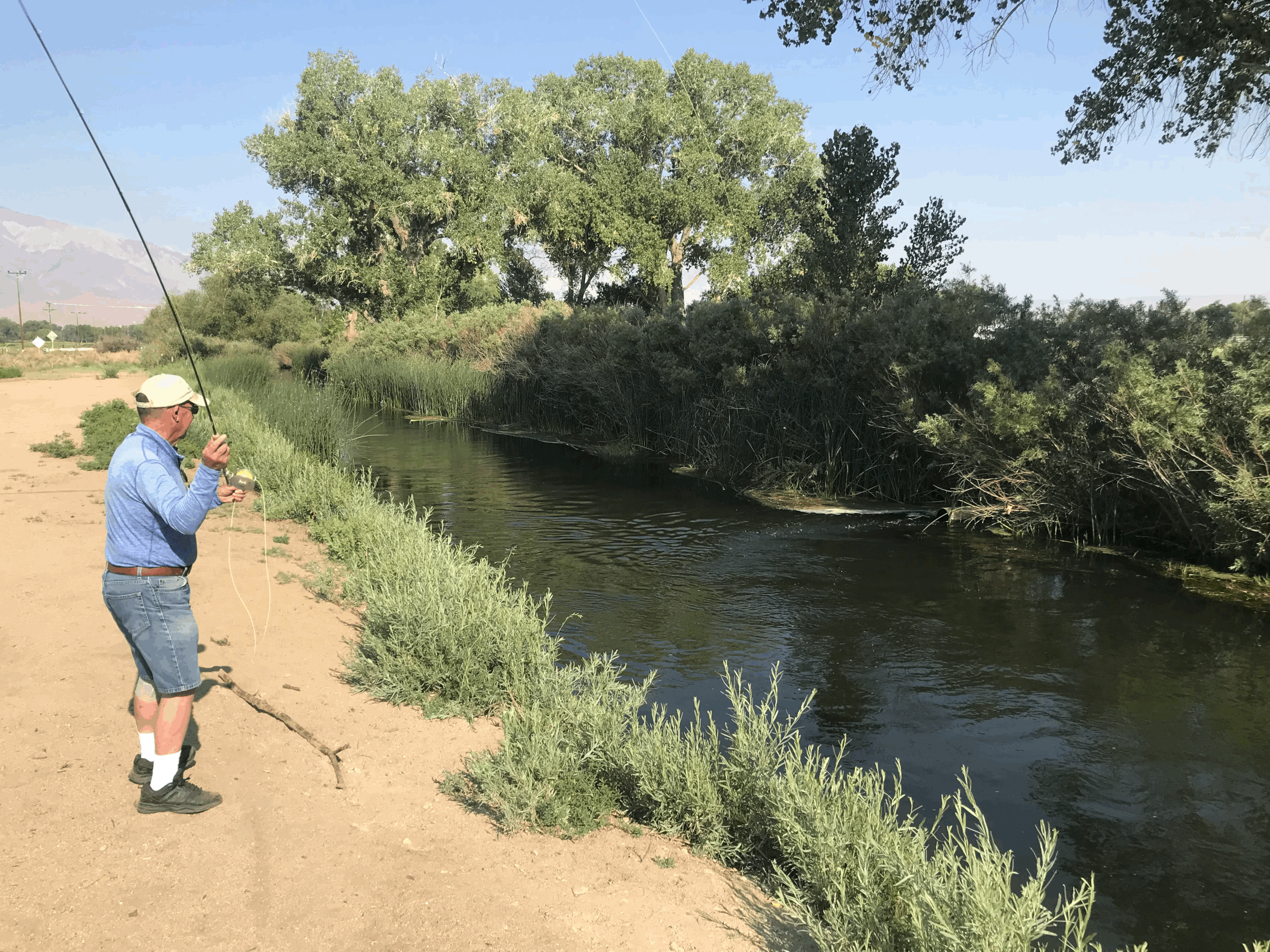California Department of Fish and Wildlife has initiated a voluntary hoot howl. This is where anglers are asked to fish first thing in the morning and last think at night when water temperatures are good for catch and release fishing. Anglers need to be aware that water temperatures over 68 degrees presents a risk to trout in a catch and release fishery. From 68 degrees to 70 degrees fish should be landed quickly and released without taking them out of the water. Water temperatures over 70 degrees and fly fishers should stop fishing. Two waters in the Eastern Sierra that are suffering from high water temperatures middle of the day are Crowley Lake and the East Walker River.
Lower Owens River Wild Trout Section:
Morning water temperature are conducive to fly fishing. The days are heating up and I like to be off the water by noon. Nymphing in the mornings has been the most productive. The river continues to flow at 225 CFS which is a perfect level for wading the river. Though some like to wet wade, I’ve been using waders because I’m in hip deep water for a couple of hours at a time. The willows and tulles have been providing shade for both fly fishers and fish. For nymphs I’ve been using bead head flash back pheasant tail nymphs, bead head flash back gold ribbed hare’s ears, copper and red Copper John’s, Butano nymphs, and quildigons.
Bill Sidenfaden of Dana Point getting ready to lob a three fly Euro rig upstream on the lower Owens River.
Hot Creek:
Interpretive Site:
While springs create a constant water temperature for Hot Creek, insect activity in the mornings is only lasting tell about 11:00 A.M. The insect activity picks up again in the evening when caddis become active. The morning trico mayfly hatch continues to offer fly fishers great morning fly fishing with duns and spinners. A good drift will produce lots of fish for fly fishers working the creek with trico spinners in size 24, trico spinner parachutes in size 22, and trico parachutes in size 22. Blue wing olive parachutes in size 22 and blue wing olive emergers in size 22 have been fooling the aggressively feeding trout.
With a pattern that matches the hatching trico’s or the dead trico spinners, anglers are hooking up on wild brown trout and rainbow trout in the interpretive site of Hot Creek.
Hot Creek Canyon Section:
Mornings have been offering the best fly fishing of the day. Fishing with trico nymphs, duns, and spinners is producing wild brown and rainbow trout. I like to fish with a size 16 Adams parachute as my indicator. Before the hatch I use a size 18 bead head flash back pheasant tail nymph 20 inches below the Adams parachute on 20 inches of 6X tippet. When the hatch is going strong, I switch to a size 22 trico parachute. The Adams Parachute helps me find the tiny fly floating on the surface. When I lose sight of the trico pattern I set the hook on any rise within 20 inches of Adams Parachute. Once the trout start taking the trico spinners I change my fly to a size 24 trico spinner pattern. Mid-day, 11:00 to noon or 1:00 P.M. I switch back to the bead head flash back pheasant tail or fish with a bead head flash back gold ribbed hare’s ear. By noon the fishing is over and I head to Mammoth or Crowley Lake looking for lunch.
Upper Owens River:
Above Benton Crossing Bridge:
By Mid-afternoon water temperatures are at a level that fly fishers need to practice good catch and release techniques, land fish quickly and do not remove trout form the water. Late afternoon temperatures are hot enough that fly fishers should consider quitting and coming back in the evening to fish if the water temperature drops below 68 degrees.
Morning temperatures have been good for fly fishing and nymphing has been productive for quality and trophy brown and rainbow trout. Working Euro nymph rigs and indicator nymph rigs in the deeper holes and slots is productive. Green/gold wire Prince nymphs, stoner nymphs, bead head flash back pheasant tail nymphs, bead head flash back gold ribbed hare’s ears, Butano nymphs, and olive quilldigons are fooling the Upper Owens River trout. Hopper activity has been weak so far this season. Fish are taking hoppers, but not with the ferocity that they have in the last two years.
Euro nymphing the deep slots and holes is producing wild rainbows and browns.
Bishop Creek Canal Behind the Ford Dealer:
The Bishop Creek Canal is a great spot to fish for a few hours in the morning before the outside temperature sail up to the high 90’s or low 100’s. Fishing with a Euro nymph rig or a dry and dropper is producing wild brown trout and stocker rainbows. A size 14 Adams parachute with a size 18 bead head flash back pheasant tail nymph is producing good numbers of trout for fly fishers that can get a good drift and set the hook when a fish takes the Adams parachute or when it gets pulled under the water from a trout taking the nymph.
Casting a dry and dropper rig into Bishop Creek right above the outflow of Bishop Creek Canal first thing in the morning produced lots of wild brown trout and stocker rainbows.
San Joaquin River:
The San Joaquin River is my favorite spot to fly fish. The casting is technical, but the wild rainbow, brook, brown, and hybrid golden trout are abundant. This is pocket water fly fishing at it’s best. I like throwing Adams parachutes, Royal Wulff’s, and elk hair caddis in sizes 14 and 16. I quite often add a bead head flash back pheasant tail nymph or bead head flash back gold ribbed hare’s ear in size 14 or 16. This is a quantity fishery for six to eight inch trout.
The San Joaquin River is prime pocket water fly fishing for wild trout.





